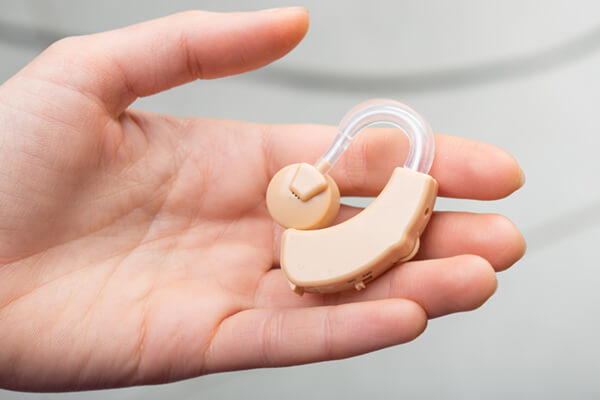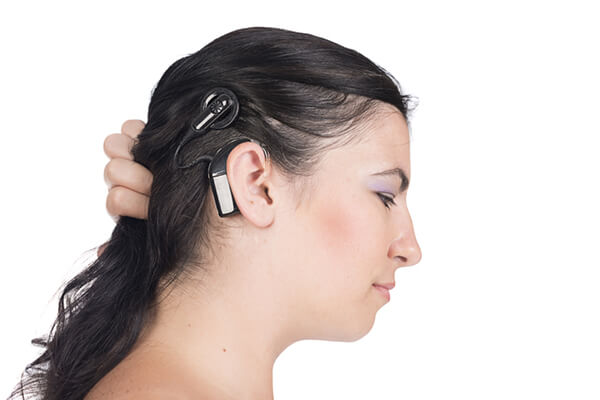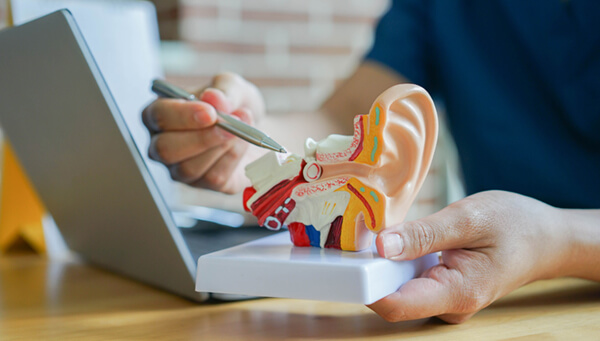Globally, more than 1.5 billion people deal with some level of hearing loss. Of these, 430 million of these individuals suffer from disabling hearing loss. Estimates suggest disabling hearing loss could impact more than 700 million individuals by 2050.
Hearing loss is a huge global issue, and current treatment options like surgery, hearing aids, and cochlear implants, while effective, have limitations and drawbacks. However, there’s a new solution in the works: optical cochlear implants. These implants use light to improve patient outcomes. Here’s some information on what this innovation could mean for the future of hearing loss.

Optical cochlear implant research is in the works, but clinical trials won’t begin until 2026. Nevertheless, learning about how this technology works could mean an exciting future is instore for hearing restoration.
How Traditional Cochlear Implants Work

Patients with severe hearing loss beyond what a hearing aid can correct sometimes opt for cochlear implants. These implants don’t amplify sound like a hearing aid but bypass the non-working areas of your inner ear, directly stimulating your hearing nerve.
Yet, cochlear implants don’t restore natural hearing because they bypass part of your inner ear. Instead, they equip the patient with a type of electric hearing by using electrodes to stimulate the cochlear nerve.
As a result, patients sometimes struggle to hear voices and separate background noises, especially when first getting used to their new hearing. Technicians can fine-tune their implants, but re-creating natural hearing isn’t possible.
When you go with a cochlear implant, you could struggle to hear voices in social settings or distinguish background noise, making them challenging for some patients to use.
How Optical Cochlear Implants are Different

Early research suggests optical cochlear implants could offer improved outcomes because they use light instead of electrodes to stimulate the cochlear nerve.
Basically, instead of an electrical signal, this technology implants a light emitter and genetically altered cells that respond to that light into the patient’s ear. The device then sends a precise light beam that stimulates the cochlear nerve.
So far, this research shows that this light does a better job of stimulating this nerve with higher frequency selectivity than electrical implants. This increased stimulation could create better hearing of speech and music, as background noise should become less of an issue.
While this technology is in its infancy, mainly due to the inaccessibility and complicated nature of the human cochlea, an implant with LED emitters was successfully inserted into a common marmoset. Other animal research will continue in the coming years until the technology is ready for human beings.
What This Means For the Future

We’re still a ways off from optical cochlear implants becoming a reality for human patients. Still, current research is promising, suggesting this technology could provide a solution for many hard-of-hearing individuals.
The drawbacks of traditional cochlear implants are significant and make the technology challenging to use in social settings. If all goes according to plan, though, this innovation could solve that issue and become the standard form of cochlear implant moving forward.
Developers aim to start clinical trials In 2026, and if all goes according to plan, regulatory approval could arrive as soon as 2030. Assuming clinical trials go well, hearing loss could be less of an issue for individuals with access to this technology.
Keeping an Eye on Innovation
Even if you aren’t currently suffering from hearing loss, you could find yourself as one of the 48 million Americans in this position as you age. Fortunately, researchers are working toward new solutions that could limit the effect hearing loss has on your life in your later years.
Would you like to be one of the first to try this innovative hearing restoration technique in the future? Let us know in the comment section below, and don’t forget to share this article with anyone in your life suffering from hearing loss.
I am very interested interin this i?
I am interested
Wow that sounds awesome thanks